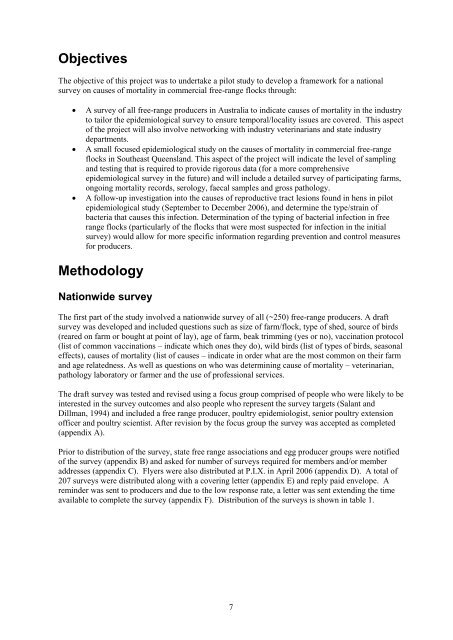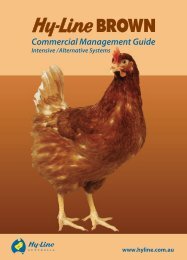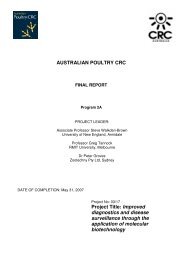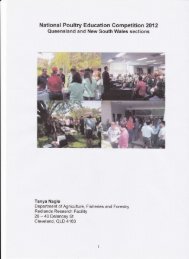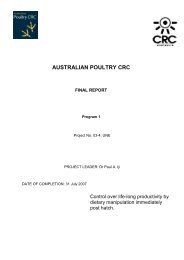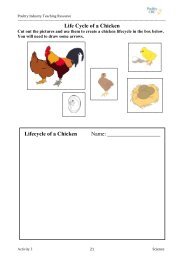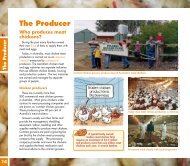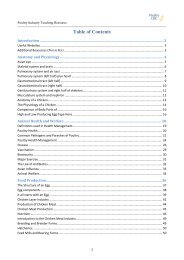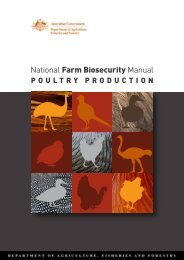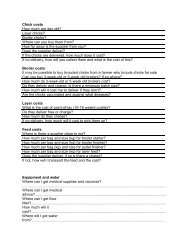AUSTRALIAN POULTRY CRC - Poultry Hub
AUSTRALIAN POULTRY CRC - Poultry Hub
AUSTRALIAN POULTRY CRC - Poultry Hub
- No tags were found...
You also want an ePaper? Increase the reach of your titles
YUMPU automatically turns print PDFs into web optimized ePapers that Google loves.
ObjectivesThe objective of this project was to undertake a pilot study to develop a framework for a nationalsurvey on causes of mortality in commercial free-range flocks through:A survey of all free-range producers in Australia to indicate causes of mortality in the industryto tailor the epidemiological survey to ensure temporal/locality issues are covered. This aspectof the project will also involve networking with industry veterinarians and state industrydepartments.A small focused epidemiological study on the causes of mortality in commercial free-rangeflocks in Southeast Queensland. This aspect of the project will indicate the level of samplingand testing that is required to provide rigorous data (for a more comprehensiveepidemiological survey in the future) and will include a detailed survey of participating farms,ongoing mortality records, serology, faecal samples and gross pathology.A follow-up investigation into the causes of reproductive tract lesions found in hens in pilotepidemiological study (September to December 2006), and determine the type/strain ofbacteria that causes this infection. Determination of the typing of bacterial infection in freerange flocks (particularly of the flocks that were most suspected for infection in the initialsurvey) would allow for more specific information regarding prevention and control measuresfor producers.MethodologyNationwide surveyThe first part of the study involved a nationwide survey of all (~250) free-range producers. A draftsurvey was developed and included questions such as size of farm/flock, type of shed, source of birds(reared on farm or bought at point of lay), age of farm, beak trimming (yes or no), vaccination protocol(list of common vaccinations – indicate which ones they do), wild birds (list of types of birds, seasonaleffects), causes of mortality (list of causes – indicate in order what are the most common on their farmand age relatedness. As well as questions on who was determining cause of mortality – veterinarian,pathology laboratory or farmer and the use of professional services.The draft survey was tested and revised using a focus group comprised of people who were likely to beinterested in the survey outcomes and also people who represent the survey targets (Salant andDillman, 1994) and included a free range producer, poultry epidemiologist, senior poultry extensionofficer and poultry scientist. After revision by the focus group the survey was accepted as completed(appendix A).Prior to distribution of the survey, state free range associations and egg producer groups were notifiedof the survey (appendix B) and asked for number of surveys required for members and/or memberaddresses (appendix C). Flyers were also distributed at P.I.X. in April 2006 (appendix D). A total of207 surveys were distributed along with a covering letter (appendix E) and reply paid envelope. Areminder was sent to producers and due to the low response rate, a letter was sent extending the timeavailable to complete the survey (appendix F). Distribution of the surveys is shown in table 1.7


